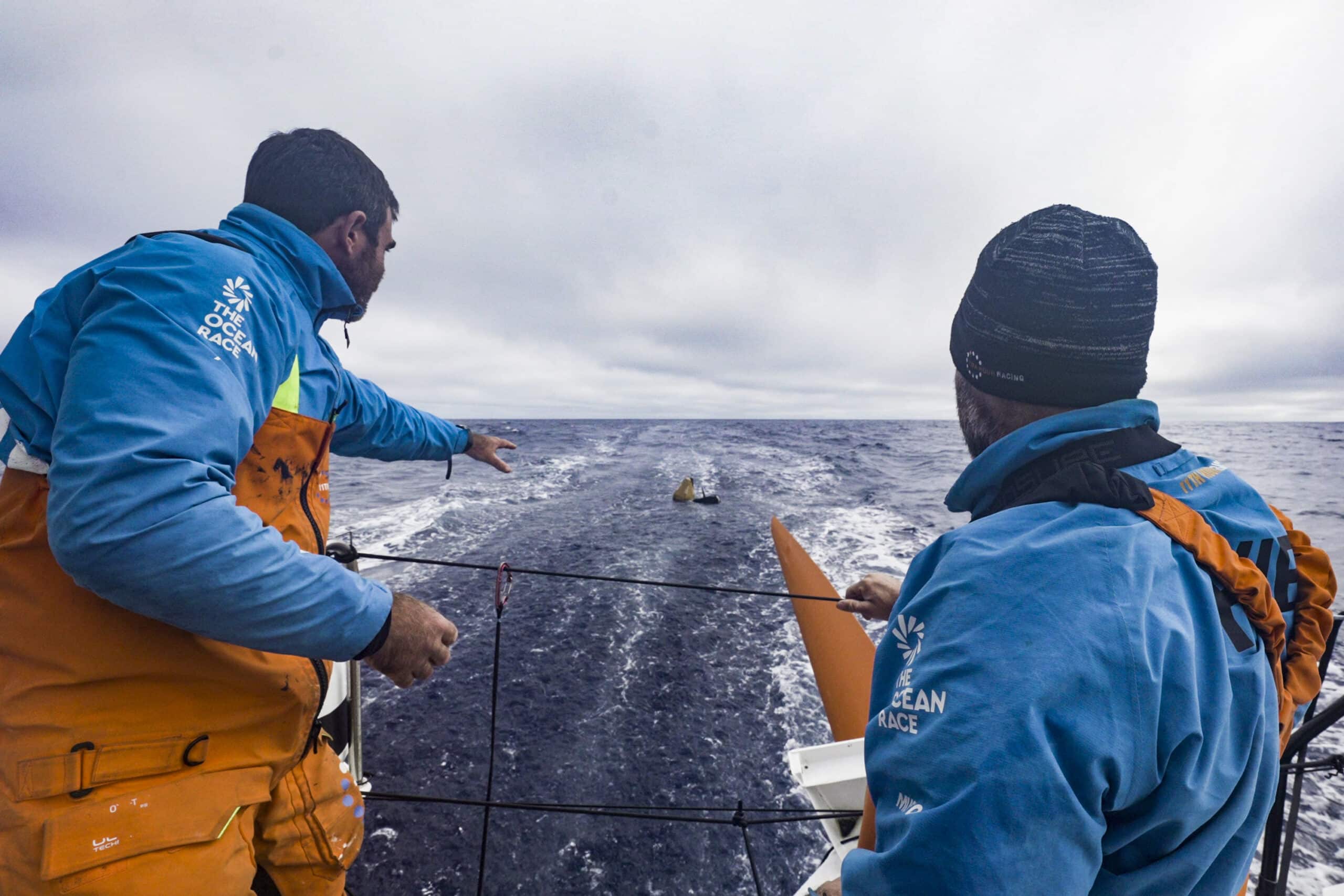VITAL BUOY DEPLOYED IN THE REMOTE SOUTHERN OCEAN
As Mālama was passing through one of the most remote parts of the most remote ocean in the world, the team deployed a surface drifter buoy off the back of the boat. It’s another milestone passed in the other race that 11th Hour Racing Team is participating in, the race to protect the world’s ocean.
With The Ocean Race fleet passing some of the most remote locations on earth – places seldom reached by scientific vessels – deploying these surface drifter buoys makes it possible to collect vital data where none has previously been directly measured. The data from these remote buoys is providing valuable insights for the scientific community.
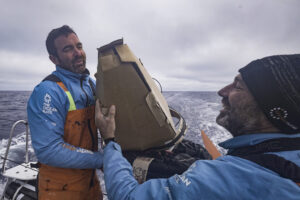
Skipper Charlie Enright is proud to be able to contribute to a mission that aligns so closely with those of the team. “This is the second drifter buoy that we have deployed on Leg 3 of The Ocean Race. We’re down here at 55 degrees south, a very remote location. Not a lot of people come down here. So as athletes, as sailors, we feel it’s our responsibility to contribute back to the scientific community because we gain so much from them. This is a wonderful opportunity for us to do so.
“These drifter buoys record sea surface temperature, atmospheric pressure, and they help to check current set adrift and pretty remote parts of the world. And actually, that goes back into informing the climatological models that we use on board.”
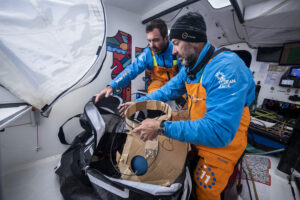
Currents regulate the global climate, which is why gathering data directly from the ocean is essential. Drifter buoys are the backbone of weather forecasting and can be found across the ocean, except in some of the hard to reach and hostile environments like the Southern Ocean. So the latest buoy dropped by 11th Hour Racing Team is helping fill in another gap in the system, as crewman and veteran navigator Simon ’SiFi’ Fisher explains: “Down here in the Southern Ocean, there are relatively few data points. In the North Atlantic, for example, there’s a lot more data, there’s a lot more traffic.
“So generally, we accept that the weather modeling as being more accurate, whereas in the Southern Ocean, because there’s relatively little commercial traffic, there’s both less data getting reported back from the ships, but also less opportunities to drop these buoys. So by dropping this buoy here in the Southern Ocean, we’re immediately making our weather forecasting a little bit better by providing better data for the initialization of the model set. Quite a cool thing.”
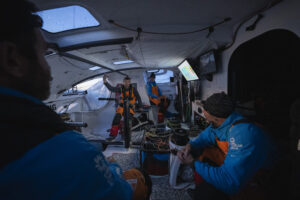
Anchored by a drogue to slow down their movement as they float free in the ocean, the buoys measure about 40 centimeters (15.7 inches) in diameter and weigh around 20 kilograms (44lbs) , and will typically continue to transmit data for two years. This data is transmitted by satellite to meteorological organizations like Meteo France and NOAA (National Oceanic and Atmospheric Administration) and then feeds into the Global Telecommunication System (GTS), the international network of the World Meteorological Organization (WMO). Data from the GTS is used by weather forecasters across the world.
Charlie says the buoy will give them almost instant payback as well as making a contribution to the wider scientific community: “It will actually help not only the accuracy of these models but will help us as sailors as we’re routing around the world. Not only in terms of our weather, but also in terms of our safety, because it’s a pretty difficult part of the world to navigate.
“We’re currently right up against an ice exclusion zone, and part of the set and drift and sea surface temperature information that this exact buoy will detect can help establish where these gates should be. It should make our future race courses in sailing much safer.”
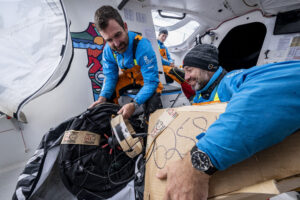
With a clear message around the protection of the ocean, The Ocean Race’s Chief Scientist, Stefan Raimund, explains the value of the data that these buoys bring to the scientific community.
“The teams are sailing through some of the most remote waters on the planet, collecting vital data where none has previously been directly measured. This makes the data that these buoys gather absolutely vital. It is open-source and used by the global meteorological community to make more accurate weather forecasts and is also analyzed by the science community to assess the health of the ocean and grow understanding of the role it plays in mitigating climate change.
“The buoys, which transmit data for around two years, are deployed with biodegradable cardboard to protect them during launch. This cardboard breaks down quickly and is not harmful in any way. We recognized and assessed the very small environmental impact of these buoys versus the huge value they bring by supplying data to scientists around the world. The value of this cannot be underestimated, the insights feed into reports about the state of the ocean and impact of climate change that influence crucial decisions about environmental policy.”
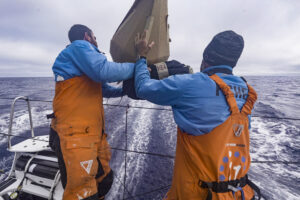
The 2022-23 edition of The Ocean Race is the only team sport in the world that requires all participants to take part in a science program that directly contributes to improving the understanding of the state of the ocean.
Back onboard and this message is mirrored by Charlie. “Onboard science is a very big part of what we do in The Ocean Race, and specifically 11th Hour Racing Team. Not only do we have these drifter buoys, we also have an OceanPack-RACE system on board. The OceanPack-RACE is a system that continually monitors the water that we’re sailing through. It tests for carbon dioxide, dissolved carbon dioxide, sea surface temperature, and a host of other trace elements. The science program is a big one for us, and it’s nice when we get to be a little selfish, because this technology and research comes back to help us in the end.”



